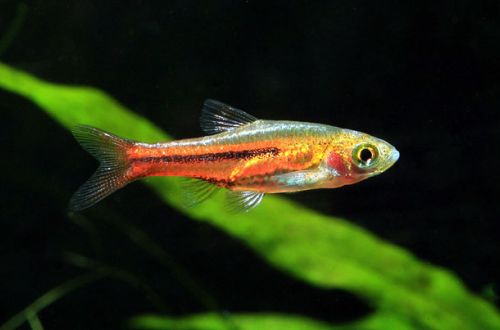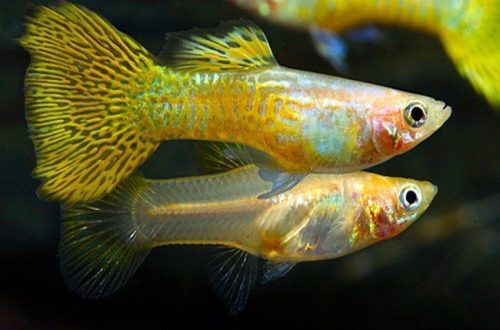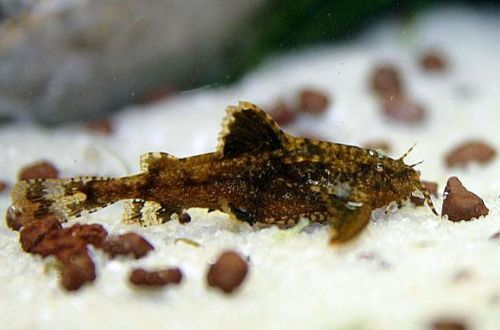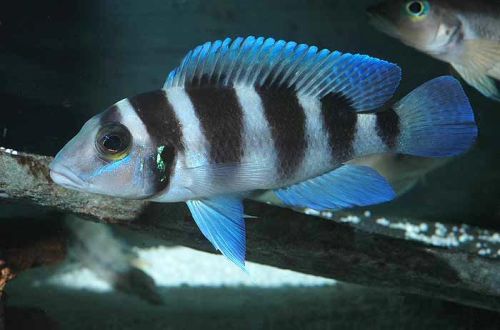
Lamprologus blue
Blue Lamprologus or Cichlid Zebra five-banded, scientific name Neolamprologus tretocephalus, belongs to the Cichlidae family. Bright moving and easy to keep fish. However, it is prone to excessive aggression, especially during the spawning period, which does not allow it to be recommended to beginner aquarists.

Contents
Habitat
Endemic to Lake Tanganyika in Africa, located between the states of the Democratic Republic of the Congo, Tanzania, Burundi and partially Zambia. The lake is located in the so-called rift valley and resembles Baikal in its origin and uniqueness of the ecosystem. This species of fish lives mainly in shallow waters near the shore with alternating substrates – rocky and sandy.
Brief information:
- The volume of the aquarium – from 100 liters.
- Temperature – 23-27°C
- Value pH — 7.5–9.0
- Water hardness – medium to high hardness (10-25 dGH)
- Substrate type – sandy or rocky
- Lighting – moderate
- Brackish water – no
- Water movement – weak, moderate
- The size of the fish is about 15 cm.
- Nutrition – Meat-based foods are preferred
- Temperament – aggressive
- Keeping alone or in pairs male / female
Description
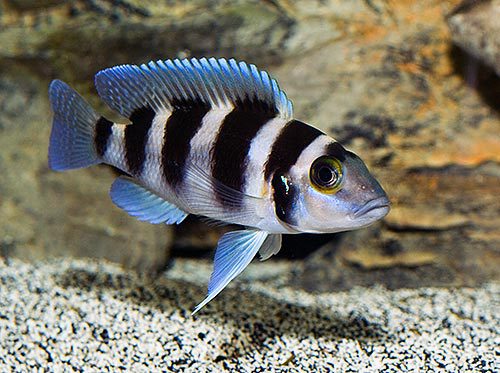
Adult individuals reach a length of about 15 cm. Sexual dimorphism is weakly expressed, it is outwardly problematic to distinguish a male from a female for an unprofessional look. The body pattern consists of wide black vertical stripes on a light blue background. The fins and tail are blue.
Food
Feed live or frozen foods such as daphnia, brine shrimp, bloodworms. It is allowed to supply dry feed in the form of granules containing a large amount of protein.
Maintenance and care, arrangement of the aquarium
A suitable aquarium size for one pair of fish starts from 100 liters. The design is simple and should mimic natural habitat conditions. To do this, it is enough to use sandy soil and heaps of large stones and rocks from which caves, grottoes and crevices are formed.
Maintaining stable water conditions reminiscent of Lake Tanganyika’s hydrochemical composition, in particular high pH and dGH values, is key to keeping the Zebra Five Stripe Cichlid. Another important aspect is aquarium maintenance. Installation of a performance filter, regular removal of organic waste and a weekly change of part of the water are mandatory.
Behavior and Compatibility
An aggressive and territorial species, so the choice of neighbors should be taken with great care. In a small aquarium, it is allowed to keep only one mature pair (male / female) of Lamprologus blue or singly. In large volumes, it can be combined with species occupying various areas in the water column, such as Julidochromis and Ciprichromis. With enough space at the bottom of the aquarium, it will be possible to settle several relatives and Mbuna cichlids, each of which will occupy its own site. The main thing is that there is enough space for everyone, otherwise skirmishes cannot be avoided.
Breeding / breeding
Breeding in a home aquarium is possible, but fraught with great difficulties. The main one is the search for a suitable pair. Cichlids Zebra five-striped as they grow older, they find a companion with whom they will produce offspring in the future. Just putting an adult male and female together will not work. Most likely the latter will die.
Even if you manage to acquire a formed pair, the female will still be in danger. During the mating season, the male becomes overly aggressive and persistent in his courtship, and if the female is not ready, she is forced to hide in reliable shelters.
The eggs are laid in a cave or in a hole at the bottom. Parents remain near the masonry until the fry appear. When the offspring begin to swim freely, the male takes over their protection. From this point on, it is advisable to move the female separately, otherwise even she will be considered a threat.
From the foregoing, it becomes clear that spawning should be carried out in a separate aquarium and be ready to relocate one of the fish in time if the situation does not develop as it should.
Fish diseases
The main cause of most diseases of cichlids from Lake Tanganyika is unsuitable housing conditions and poor quality food, which often leads to such a disease as African bloat. If the first symptoms are detected, you should check the water parameters and the presence of high concentrations of hazardous substances (ammonia, nitrites, nitrates, etc.), if necessary, bring all indicators back to normal and only then proceed with treatment. Read more about symptoms and treatments in the Aquarium Fish Diseases section.



